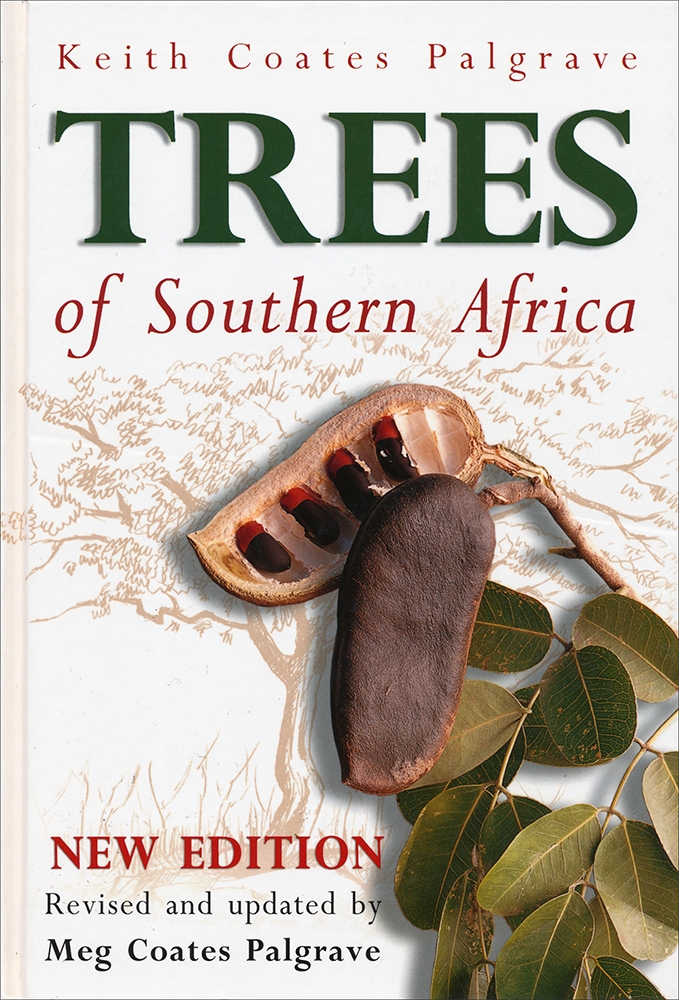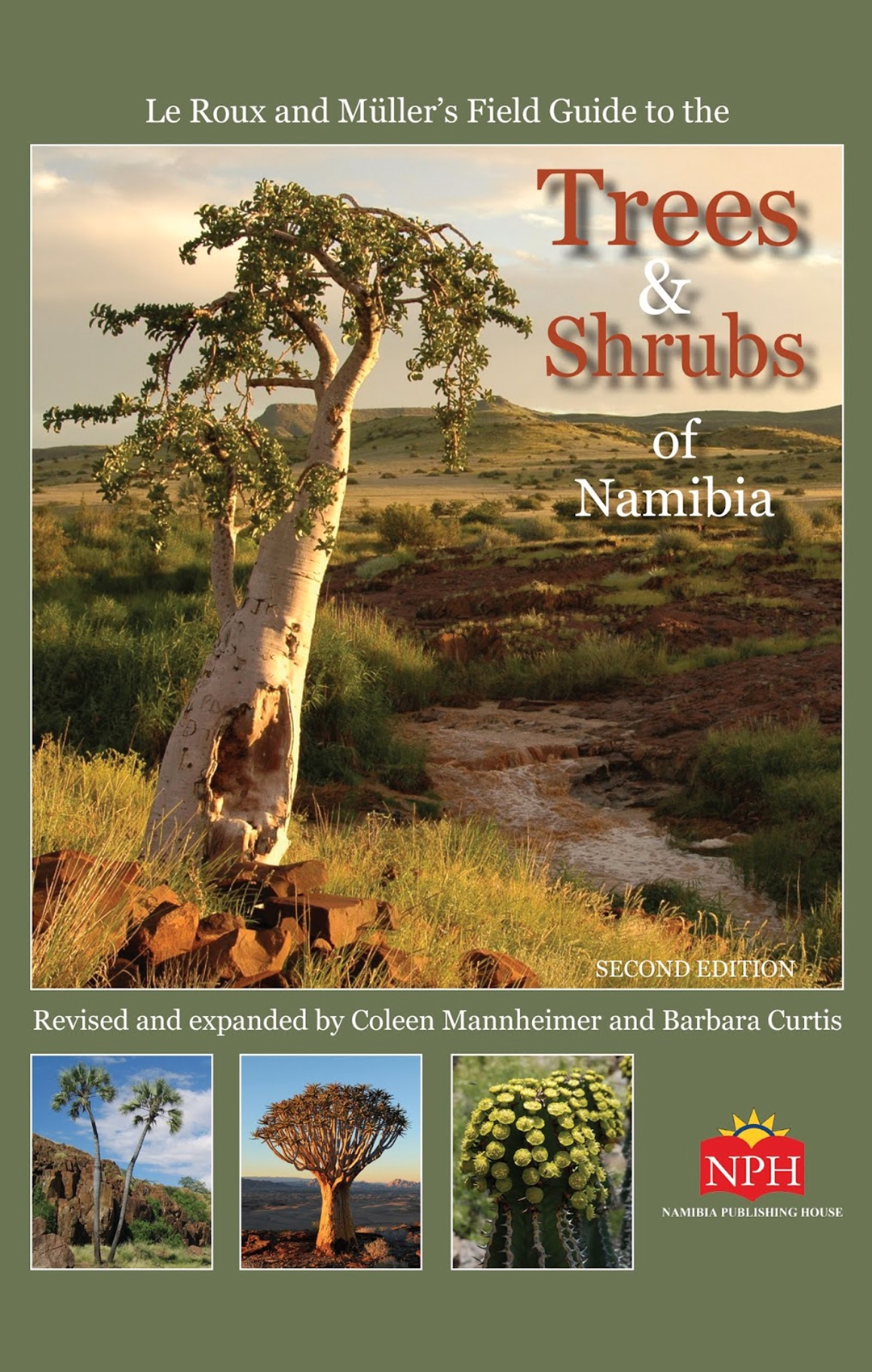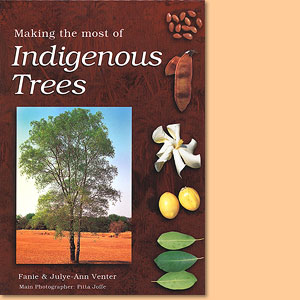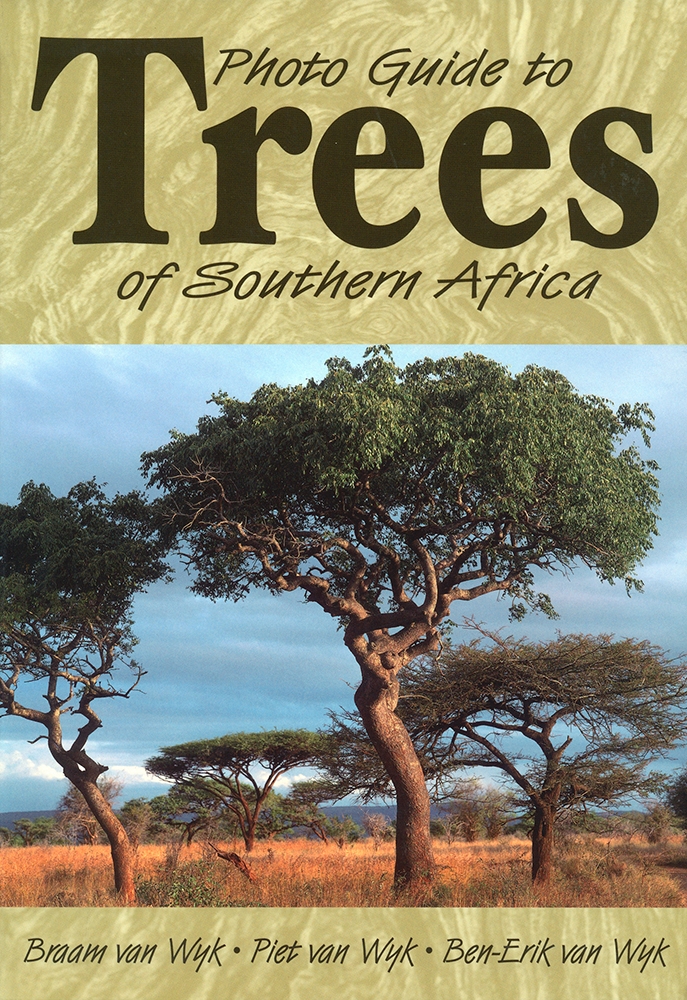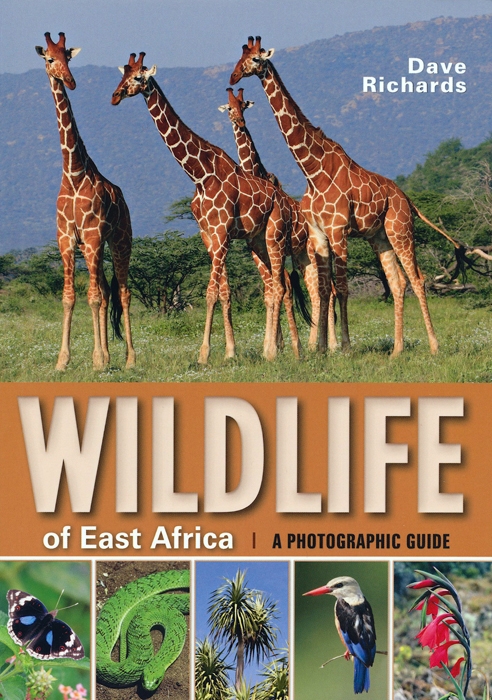Palgrave's Trees of Southern Africa, by Keith Coates Palgrave and Meg Coates Palgrave
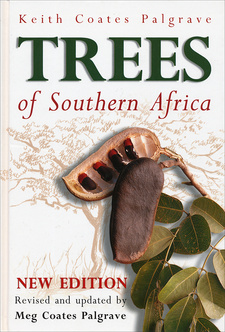
Palgrave's Trees of Southern Africa, by Keith Coates Palgrave and Meg Coates Palgrave. Struik Publishers. 3rd edition, Cape Town, South Africa 2002. ISBN 9781868723898 / ISBN 978-1-86-872389-8
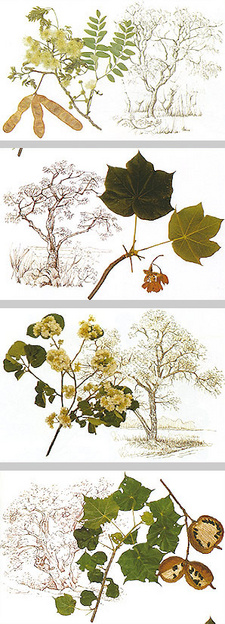
Images from Palgrave's Trees of Southern Africa, by Keith Coates Palgrave and Meg Coates Palgrave.
Description by Keith Coates Palgrave and Meg Coates Palgrave: Palgrave's Trees of Southern Africa describes and illustrates the indigenous trees and many of the now naturalised, non-indigenous or alien species that occurr in South Africa, Zimbabwe, Namibia, Botswana, Lesotho, Swaziland and Mozambique, south of the Zambezi River.
Meg Coates Palgrave Keith Coates Palgrave
There are obvious 'trees' - tall specimens with one main stem. There are also perennial woody plants, multi-stemmed or low branching, without a main trunk, but which can reach a height of up to 10 metres, which also need to be considered. The approach in this book has been to include as many species as possible in whose shade you could sometimes sit. The intention has been to include a few species that, strictly speaking, should not be here, rather than to omit species that readers would expect to find in the book.Language has been kept simple, and should be fairly easily understood by all; the use of botanical terms has been kept to a minimum and those that are unavoidable are explained in the illustrated glossary (p. 20) and the glossary of miscellaneous terms (p. 24). Both flowering and fruiting times are given in the text, but this does not imply that flowers or fruits will always be found throughout these periods, or even at all. It merely indicates that flowering or fruiting has been recorded during those months. These features are very variable, not only with habitat, but also from year to year, from tree to tree, and are also dependent on climatic conditions, rainfall, genetic variation and many other factors. Some trees flower only every two or three years; and a number of species are dioecious with male and female flowers on separate trees so, of course, the male trees do not produce fruit at all.
CLASSIFICATION AND PLANT NAMES
The basic unit of classification in the plant kingdom is the species, and no two species are exactly alike. Those that show a marked resemblance to one another are then grouped together into a genus, and similar genera are then placed together in a family. The names for plants are governed by The International Rules of Botanical Nomenclature. This system aims to eliminate any confusion that might arise, and indeed has arisen in the past. If a plant is found to have more than one name, the oldest name is accepted as valid, and this has often resulted in name-changes, which can be confusing but is of importance to the botanist. The name of each species is made up of two parts - the name of the genus to which the plant belongs (rather like a surname) followed by the specific name, which is that of the actual species (the Christian name). For example, four different tree ferns occur in southern Africa, and because they show marked affinities with one another they are all placed in the genus Cyathea. Each entity is then given its own specific name, which clearly establishes it as an individual species - the Grassland Tree Fern thus becomes Cyathea dregei, and the others Cyathea capensis, Cyathea manniana and Cyathea thomsonii. To complete the picture and also to provide information important to the botanist, the name of the author - the person who first named the plant - is given, although this is frequently abbreviated. Thus the full designation of the Grassland Tree Fern becomes Cyathea dregei Kunze. In this case, Kunze described the plant and placed it in the genus Cyathea, calling it Cyathea dregei. Subsequently, R.M. Tryon decided that this species was better placed in the genus Alsophila, and the Grassland Tree Fern became Alsophila dregei (Kunze) R.M.Tryon, credit still being given to Kunze by placing his name in brackets. Taxonomists have since decided that Cyathea was the correct genus after all, and Alsophila dregei (Kunze) R.M.Tryon has become a synonym, a name by which the species has also been known. (...)
This is an extract from the book: Palgrave's Trees of Southern Africa, by Keith Coates Palgrave and Meg Coates Palgrave.
Book title: Palgrave's Trees of Southern Africa
Authors: Keith Coates Palgrave and Meg Coates Palgrave
Struik Publishers
3rd edition, Cape Town, South Africa 2002
ISBN 9781868723898 / ISBN 978-1-86-872389-8
Hardcover, 17x25 cm, 1221 pages throughout bw-illustrations and a part with colour photos
Coates Palgrave, Keith und Coates Palgrave, Meg im Namibiana-Buchangebot
Palgrave's Trees of Southern Africa
Palgrave's Trees of Southern Africa introduces all known indigenous trees and naturalised aliens south of the Zambezi and Cunene rivers.
Weitere Buchempfehlungen
Le Roux and Müller's Field Guide to the Trees and Shrubs of Namibia
This is the revised and expanded second edition of Le Roux and Müller's Field Guide to the Trees and Shrubs of Namibia.
Making the most of Indigenous Trees
A most significant, useful and practical book on 144 tree species of South Africa
Photo Guide to Trees of Southern Africa
Photo Guide to Trees of Southern Africa is an invaluable identification and reference guide to 300 of the more common tree species.
Wildlife of East Africa
This is an all-in-one photographic guide to East Africa's most conspicuous and interesting mammals, birds, reptiles, frogs, insects, trees and flowers.

